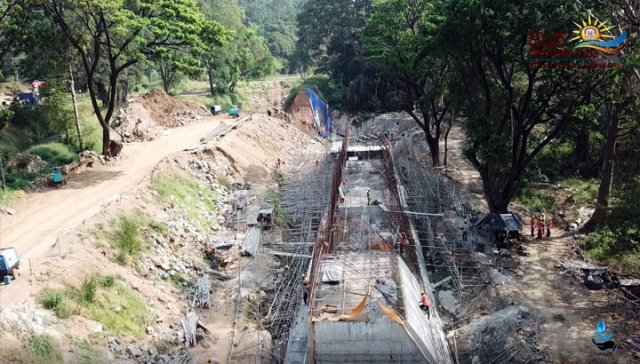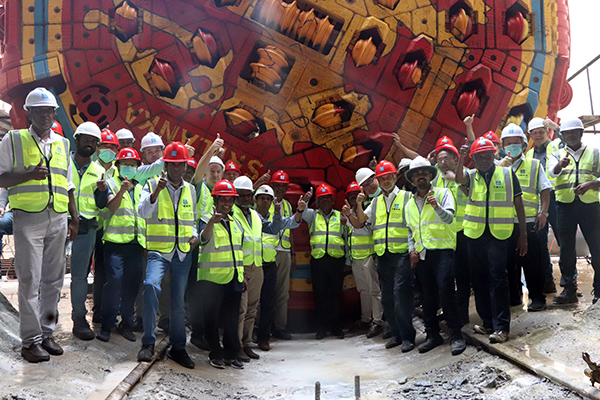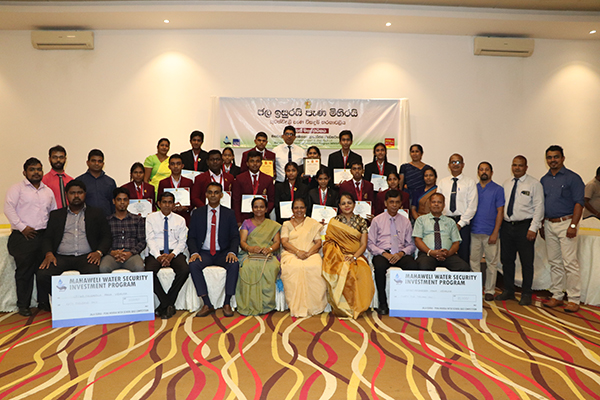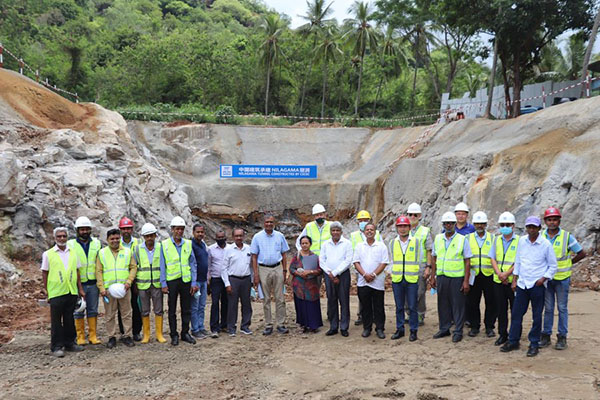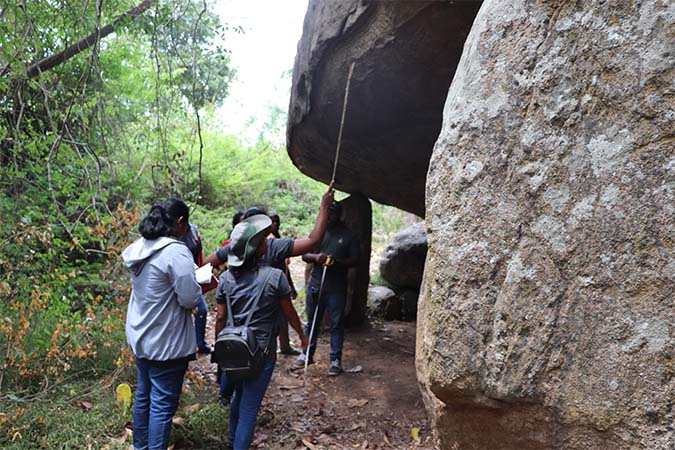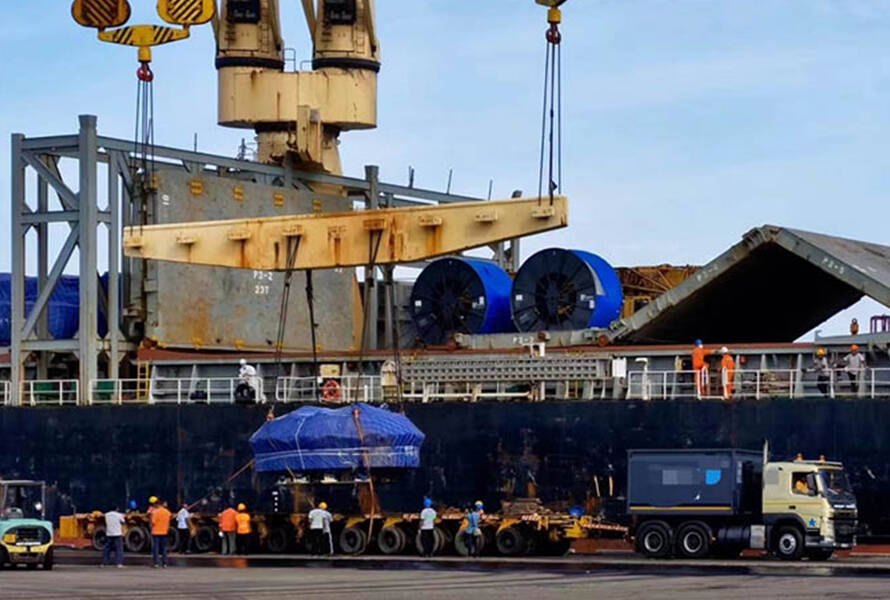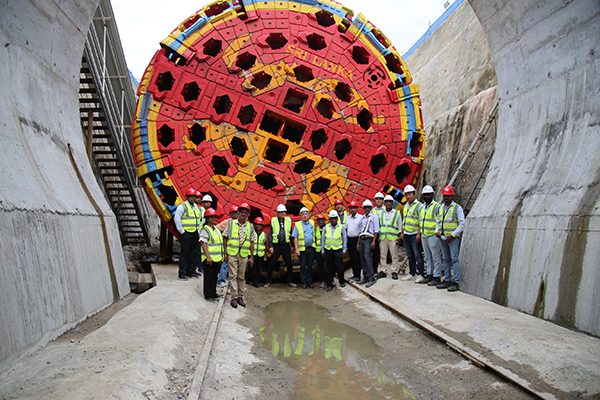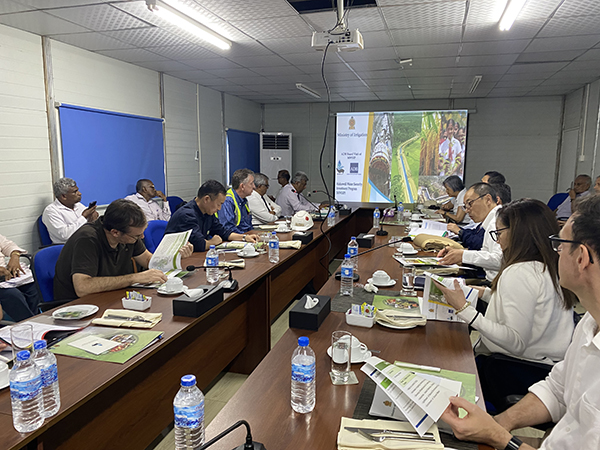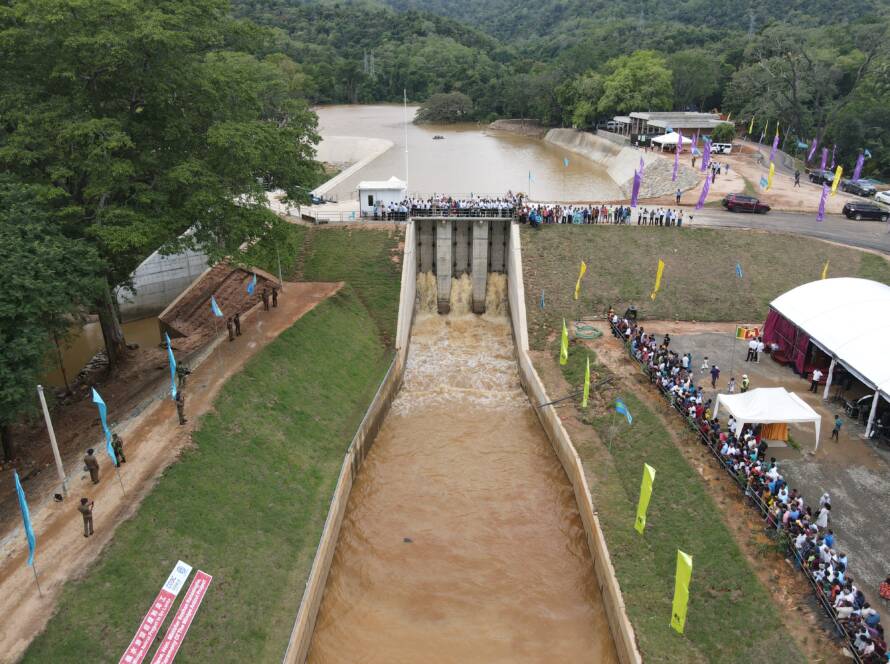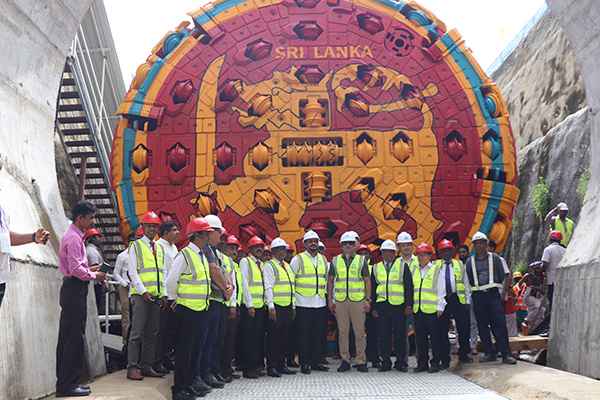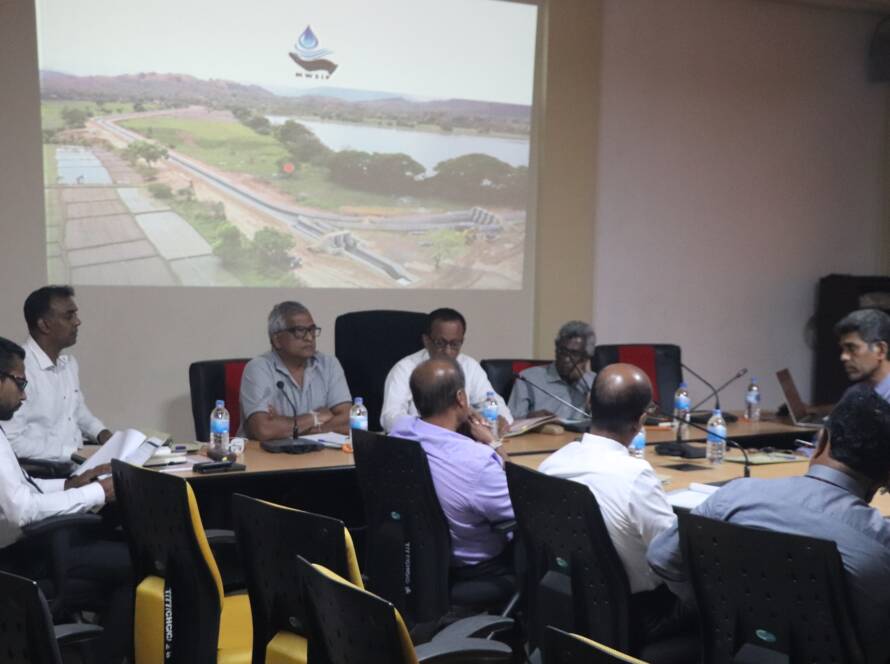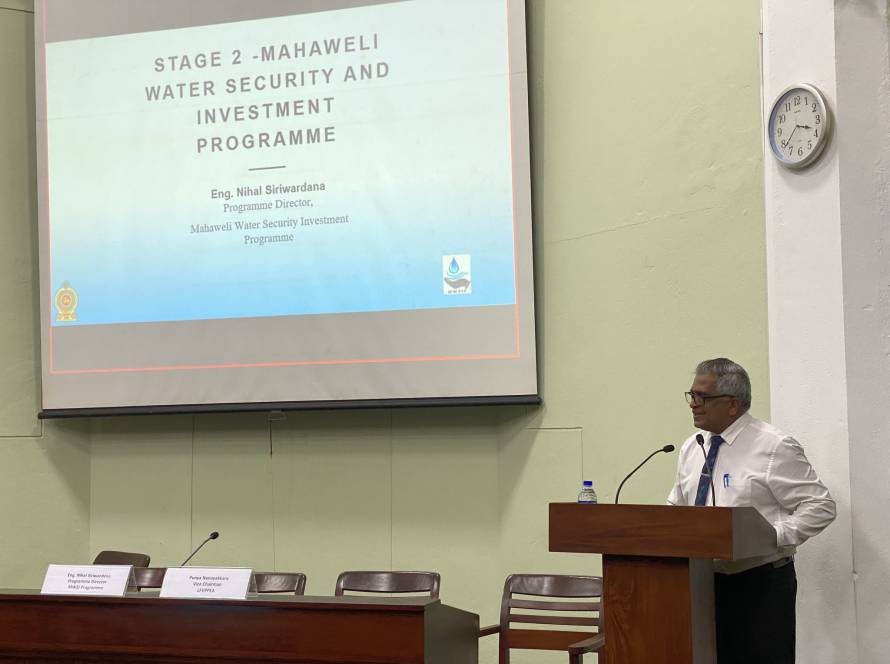Minipe Left Bank Canal Rehabilitation Project (MLBCRP)

New Minipe anicut and left bank sluice
The MLBCRP will raise the Minipe anicut / headworks weir by 3.5 m to increase upstream storage and rehabilitate the 74 km Minipe Left Bank Canal to improve conveyance and reliability of service to existing farmers. Storage behind the existing anicut is insufficient to ensure that water is available for the left and right bank canals between releases from Rantambe hydroelectric facility, which occur twice a day to respond to peak demands for electricity.
The project has now been completed and handed over to the public. Only the repair works of the right Bank Sluice are being done these days at the request of the Mahaweli Authority.
History of Minipe Anicut
The trans-basin canal from Minipe diversion carried water from Mahaweli Ganga to Amban Ganga. King Dasankeliya (459 AD) constructed this canal, which irrigated lands on the left bank of the Mahaweli Ganga. ‘Yakinna-bendi-Portawa’ anicut in Minipe was, according to legend, constructed by a she-devil under royal favour and is one of the ancient irrigation works, which came into the limelight in the 1960s during the excavations of the Archaeological Commissioner, Dr. Senarat Paranavithana. (Daily news)
This gigantic work, which inspires wonder among modern engineers, consists of a scheme that diverts the river at a bend where a large body of water enters the narrow canal formed by an island close to the bank, partially closed by two rocks, and intercepts the water on its return to the main stream. These rocks, when joined by masonry construction, became a dam raising the waters in the natural channel to a great height. Sir Henry Ward Basing in his observation on the legend describes this canal as having been capable of use for irrigation as well as for navigation. The length of this canal is 50 miles and it merges with the Amban Ganga below Angemedilla anicut. It is important to note that this canal followed an alignment that minimized deep cutting. (Sources from Department of Irrigation)
Project Details
Project Benefits
Constructions
Environmental Aspects - MLBCRP
Project Benefits
- Farmers who cultivate at tail end of the Minipe left bank canal (Stage 4) will have continuous water supplies.
- Establishment of a risk-free environment for those who living beside the Minipe canal by repairing canal defects.
- Benefits to more than 15,000 families, including farmers who can cultivate inboth Yala and Maha seasons as a result of improved reliability of water supplies.
- A tank located in the Wasgamuwa forest reserve will be fed, even in the dry season, to make water available for wild animals.
- Canal rehabilitation and modifications to the anicut will help to achieve efficient operation and maintenance, leading to improved water control and management.
Constructions
- Raising the anicut by 3.5m by constructing a new “Ogee weir” incorporating the existing Ogee weir.
- A new head regulator for the left bank irrigation canal with automatic control system to replace the existing structure.
- A new silt ejector with electrical operation system for the left bank canal with a lower sill level to minimize silt deposition in the left bank approach to the head regulator.
- A new silt ejector at the centre of the Ogee weir to remove silt depositions in the middle section of the pool.
- A new emergency spillway on the right bank canal to ensure the safety of the aqueduct across Badulu Oya.
- Rehabilitation of 74 km long left bank canal to improve the irrigation reliability and efficiency.
- Improvements to radial gated level crossing spills through introduction of electrical operation.
Environmental Aspects - MLBCRP
An Initial Environmental Examination was also carried out for the MLBCRP and approved by the Central Environmental Authority. Possible project impacts on the environment and water availability in downstream areas following the raising of the Minipe anicut were studied during the design stage of the project. It is planned to maintain the regular water flow along the Mahaweli River toward the downstream throughout the year to ensure environmental and downstream users’ needs are satisfied. Following the approval of Forest Department and Central Environment Authority, the project will execute reforestation programs to enrich the forest cover in the project area. The Project has taken the necessary steps to feed the mini tank located in Wasgamuwa forest reserve to meet the drinking water requirement of wild animals during dry seasons. Rehabilitation and construction will be carried out in compliance with the Environmental Management plan which is prepared as per the CEA approved IEE – approval conditions under the National Environmental Low and Environment Safeguard Policy (2009) of ADB. Financial allocation of around 7% is allocated for environmental mitigations and specialized manpower with required procedural provisions are in place to ensure proper environment management of the project.


MLBCR Map
GRM
News & Events
Latest News
PMDSC – Program Management Design &
Supervision Consultant,
No. 493 1/1, T.B. Jayah Mawatha,
Colombo 10.
+94 11 2 675 063
michael.chegwin@tractebel.engie.com
Copyright © 2023 Mahaweli Water Security Investment Program.All Rights Reserved.
Design & Developed by Ysoft
 PMDSC – Program Management Design &
PMDSC – Program Management Design &
Supervision Consultant,
No. 493 1/1, T.B. Jayah Mawatha,
Colombo 10.
+94 11 2 675 063
michael.chegwin@tractebel.engie.com
Copyright © 2023 Mahaweli Water Security Investment Program.All Rights Reserved.
Design & Developed by Ysoft

